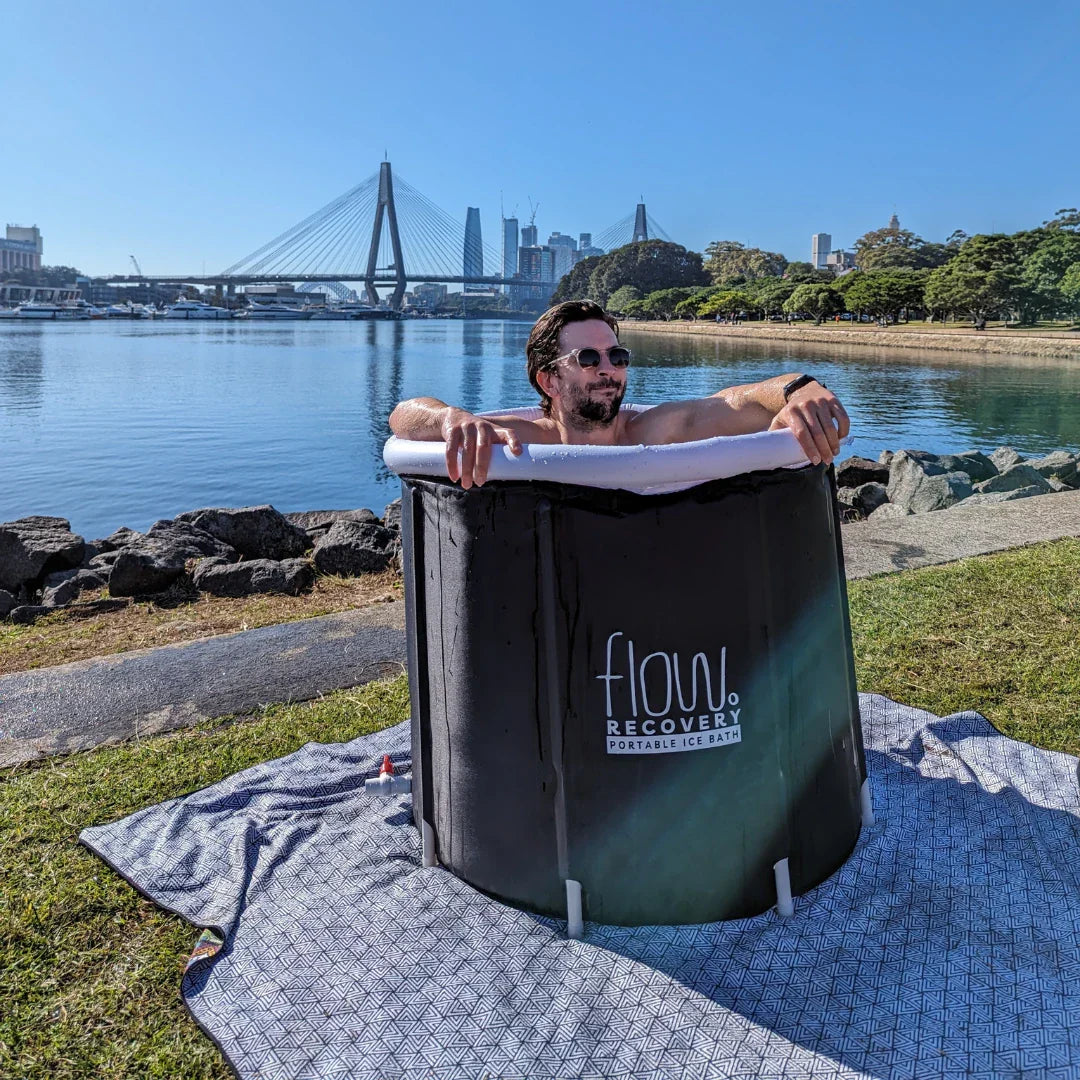Ice baths have become a go-to recovery tool for athletes, fitness enthusiasts, and anyone looking to bounce back faster after intense workouts. But if you’re new to the practice, you might be wondering: How long should I stay in an ice bath to actually see benefits? Spending too little time might not give you the recovery boost you want, and staying too long could do more harm than good. Let’s break it down in simple, easy-to-follow terms.
What Is an Ice Bath?
An ice bath, also known as cold water immersion, is pretty much what it sounds like. You sit or soak in a tub filled with cold water, usually between 10 and 15°C (50–59°F), sometimes with ice added to keep it chilly. It might sound extreme, but it’s a popular method for reducing muscle soreness, decreasing inflammation, and speeding up recovery after tough workouts.
When you immerse yourself in cold water, your body reacts in several ways. Blood vessels constrict, which helps limit swelling and inflammation. Once you get out, your body warms up and blood flow increases again. This process can help flush out metabolic waste and deliver nutrients to muscles, which supports faster recovery.
How Long Should You Stay in an Ice Bath?
One of the most common questions we hear is: “How long is enough?” The general recommendation for most people is 10 to 15 minutes.
- 10–15 minutes: This is long enough for your body to experience the benefits of cold water immersion. You get reduced muscle soreness and a boost in recovery without putting your body at unnecessary risk.
- Shorter sessions for beginners: If you’re new to ice baths, it’s smart to start with 5 to 8 minutes. Your body will gradually get used to the cold, and you can increase your time as your tolerance improves.
- Too long: Spending more than 15 minutes in icy water doesn’t necessarily give you more benefits. In fact, it could increase your risk of hypothermia, numbness, or other cold-related issues. So stick to the recommended range.
Even a 2–5 minute quick plunge can have benefits, especially if you’re short on time. While it won’t be as intense as a full 15-minute session, it can still help with inflammation and give you a refreshing mental boost.
Factors That Affect Ice Bath Duration
Not everyone will react the same way to an ice bath. Here are a few factors to consider when deciding how long to stay in:
-
Experience Level - If it’s your first time, it’s best to start slow. Shorter durations allow your body to adapt to the cold. Over time, you’ll notice that you can stay in for longer without feeling overwhelmed. Experienced athletes often tolerate the full 10–15 minutes comfortably.
-
Water Temperature - The colder the water, the less time you should spend in it. Ice baths at 10°C will feel much colder than 15°C, so beginners might want to stick closer to the warmer end of the spectrum until their body adjusts.
- Health Conditions - People with certain medical conditions, like heart problems or poor circulation, should be cautious. Ice baths cause your blood vessels to constrict and your heart rate to change. If you have any concerns, check with a healthcare professional before starting cold water immersion.
Safety Tips for Ice Baths
Ice baths can be safe and effective, but only if you follow a few simple guidelines:
- Use a timer: Don’t rely on guesswork. Set a timer to make sure you’re in for the right amount of time.
- Watch the temperature: Keep your bath between 10–15°C. Too cold can be dangerous, too warm won’t give you the full benefits.
- Warm up gradually afterwards: Don’t jump straight into a hot shower. Let your body warm up slowly with a warm drink or light movement.
- Listen to your body: Ice baths should feel challenging, but not unbearable. If you feel numbness, dizziness, or extreme discomfort, get out immediately.
- Combine with other recovery methods: Ice baths work best when combined with good sleep, proper nutrition, and stretching.
Benefits of Ice Baths
Now that we know how long to stay in, let’s look at why ice baths are worth your time:
- Reduce muscle soreness: Cold water immersion can help lessen delayed onset muscle soreness (DOMS) after intense workouts.
- Lower inflammation: Ice baths reduce swelling and inflammation in muscles and joints, helping you recover faster.
- Boost mental toughness: Sitting in icy water can be uncomfortable at first, but it also builds resilience and mental focus.
- Improve circulation: The constriction and dilation of blood vessels during and after an ice bath helps improve blood flow throughout your body.
- Enhance mood: Cold exposure triggers the release of endorphins, giving you a natural boost in energy and mood.
How to Make Your Ice Bath More Comfortable
For those who are hesitant or new to cold water immersion, here are a few tips to make the experience easier:
- Breathe deeply: Focus on slow, controlled breaths. It helps you stay calm and adapt to the cold.
- Start with cold showers: If jumping into an ice bath seems extreme, try cold showers first. Gradually increasing your exposure helps build tolerance.
- Add distractions: Listening to music or practicing meditation during your bath can help take your mind off the cold.
- Use proper gear: Wearing a hat or keeping your hands and feet warm can make the bath more bearable.
Final Thoughts
Ice baths can be a game-changer for recovery if done safely and consistently. The key is knowing the right duration for your body. For most people, 10–15 minutes in water between 10–15°C strikes the perfect balance between benefit and safety. Beginners can start with 5–8 minutes and gradually increase.
Remember, ice baths aren’t a miracle cure, they work best alongside proper rest, nutrition, and training. Listen to your body, follow safety guidelines, and be consistent.
Ready to take your recovery to the next level? Explore Flow Recovery’s services and discover equipment, and expert tips to optimize your post-workout routine. Don’t just recover, recover smarter. Visit us today and make ice baths a part of your recovery plan!
Frequently Asked Questions
-
How long should I stay in an ice bath for maximum recovery?
For most people, 10–15 minutes is ideal. This duration allows your body to reduce muscle soreness and inflammation without overexposure to the cold.
-
Can beginners take ice baths too?
Yes! Beginners should start with 5–8 minutes and gradually increase their time as their body adapts to the cold.
-
What is the best water temperature for an ice bath?
The recommended temperature range is 10–15°C (50–59°F). Colder water may feel intense and could shorten safe immersion time.
-
Is it safe to stay in an ice bath longer than 15 minutes?
Staying longer than 15 minutes is not recommended, as it increases the risk of hypothermia and other cold-related complications.
-
Can ice baths help with muscle soreness?
Yes! Ice baths help reduce delayed onset muscle soreness (DOMS) and promote faster recovery after intense workouts.
-
How often should I take ice baths?
It depends on your training schedule and recovery needs. Many athletes use ice baths 2–3 times per week, or after especially intense sessions.
-
What should I do after getting out of an ice bath?
Warm up gradually. Avoid jumping straight into a hot shower. Instead, sip a warm drink, move lightly, or wrap yourself in a blanket to bring your body back to normal temperature.
-
Can ice baths improve mental toughness?
Absolutely! The discomfort of cold water teaches mental resilience and focus, which can benefit both training and everyday life.
-
Are there any health risks with ice baths?
People with heart conditions, poor circulation, or other medical issues should consult a doctor before taking ice baths. Always listen to your body and exit the bath if you feel numbness, dizziness, or extreme discomfort.
-
Can a short ice bath be effective?
Yes! Even 2–5 minutes can help reduce inflammation, refresh your body, and give you a quick mental boost, especially if you’re short on time.


